
Back to Blogs
Discover
5 Things to Spot in The Great Churchyard
The Great Churchyard was once part of the Abbey of St Edmund. Here's our top 5 things to look out for when exploring this beautiful and often spooky area of Bury St Edmunds.
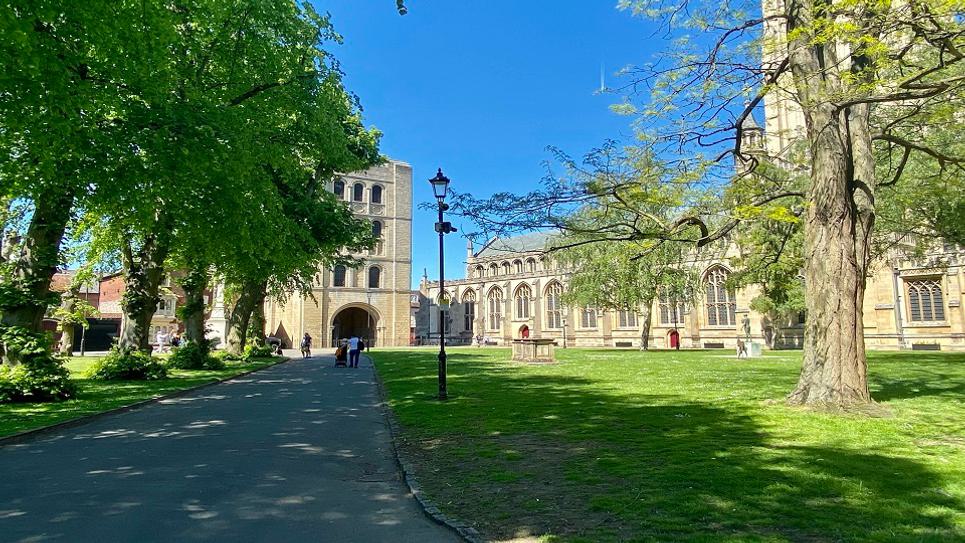
The Great Churchyard was once part of the Abbey of St Edmund, one of the largest and wealthiest Benedictine abbeys in medieval England.The earliest reference to the churchyard is in 1197 when Jocelyn of Brakelond, the great chronicler of the Abbey, commented that wrestling bouts and matches between the Abbot's servants and the townspeople in the cemetery led to wounds and bloodshed!
Today, it is a little more serene and a beautiful walk which takes in St Edmundsbury Cathedral, the Norman Tower, the ruins of The West Front of the Abbey of St Edmund, the statue of St Edmund by Dame Elisabeth Frink and St Mary's Church. Along the way there is a chance to explore the cemetery and some fascinating insights into people who lived in Bury St Edmund in days gone by, through memorials, tombs and headstones that date back to 1635.
1. Bartholomew Gosnold Memorial
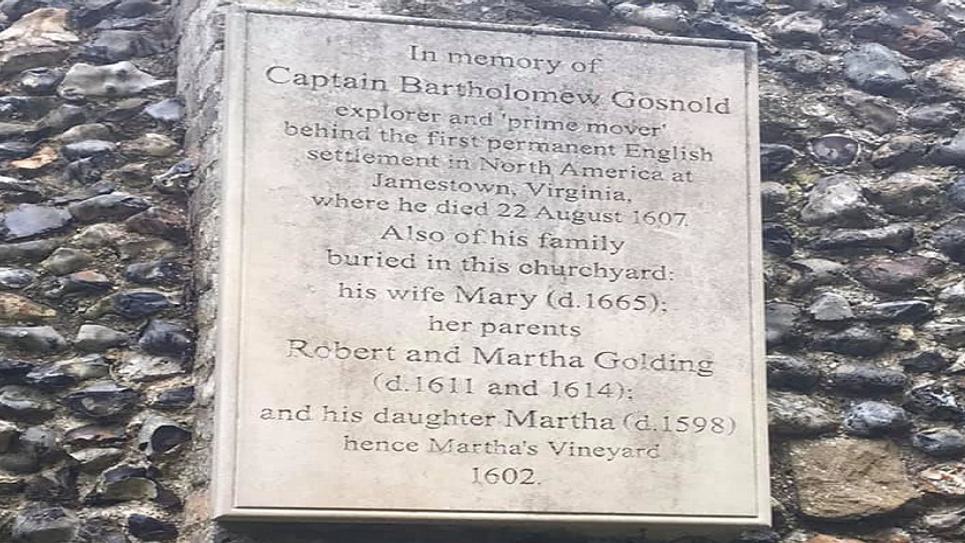
Lawyer Bartholomew Gosnold left Bury St Edmunds to found the first permanent English settlement in America - Jamestown and he named Martha’s Vineyard and Cape Cod.
You can find a memorial plaque on the Chapel of the Charnel in St Edmundsbury Cathedral's Churchyard at Bury St Edmunds. It was erected in 2007 as part of the celebrations to commemorate the founding of Jamestown.
It was on his second journey to the New World, which departed on 20 December 1606, that Gosnold commanded the ship 'Godspeed'. They made landfall on the coast of Virginia on 26 April 1607 and later reached the settlement which Gosnold was to name Jamestown, in honour of the king, on 13 May 1607.
His adventures in Jamestown were to be short lived, as Gosnold died just 4 months later on 22 August 1607 after falling ill.
On 16 September 1620, 13 years after Gosnold's death, The Mayflower would follow the northern route across the North Atlantic that he pioneered, following his charts into Cape Cod Bay.
2. Abbot John of Northwold's Charnel House
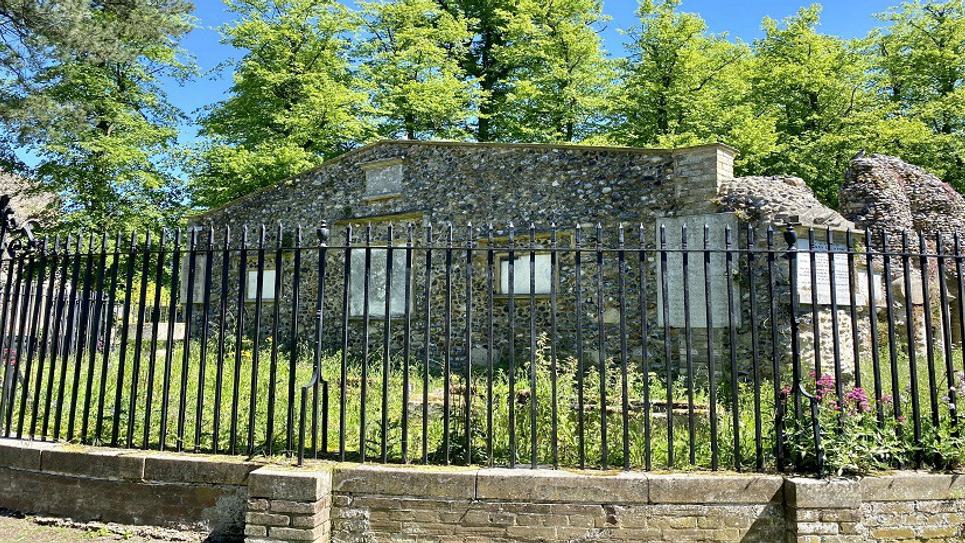
Charnal House was built around 1300 by Abbot John of Northwold. There had been so many burials over the years that the cemetery was effectively full up.
Abbot John was disturbed by the old bones being "indecently cast forth and left", and so the Charnel House was built to hold the disturbed bones.
Two chamberlains were entrusted to say prayers on a regular basis over those buried in the crypt. After the dissolution in 1539 the Charnel House became a blacksmith’s forge and an inn of all things.
It was in 1845, over 300 years after the dissolution of the Abbey, that some poor soul fell through the floor of The Charnel House and was surrounded by thousands of bones. It is now one of only a surviving handful in the country.
3. Sarah Lloyd Stone Memorial

You can just about make out the inscription on a stone on the wall of Charnel House. It says the fall “of unguarded youth, by the allurements of vice and the treacherous snares of seduction”.
Sarah Lloyd was employed as a servant for a Mrs Syer at her house in Hadleigh near Ipswich and had begun an affair with Joseph Clarke, a local man. It is said that Sarah let her lover in to Mrs Syer's house and the pair then stole various items from the house including a watch, cash and other jewellery. Clarke then set fire to the house and both of them then fled. Neighbours managed to quickly put out the fire and the house was saved.
The pair lay low until Sarah was eventually arrested and the arrest of Clarke soon followed.
Clarke was found not guilty and acquitted while Sarah was found guilty of stealing. The judge handed out the maximum sentence - death by hanging. The charges against Clarke were dropped because he hadn’t confessed to his part in the crime whereas Sarah had. It was only her word that placed Clarke at the house and no other evidence.
Sarah, 22, was executed on 22 April 1800 after a delay of 14 days as lawyer and magistrate Capel Lofft tried in vain to obtain a Royal Pardon. Sarah was buried in the churchyard.
The stone reads "May my example be a warning to thousands" - Sarah's last words.
4. Martyrs Memorial
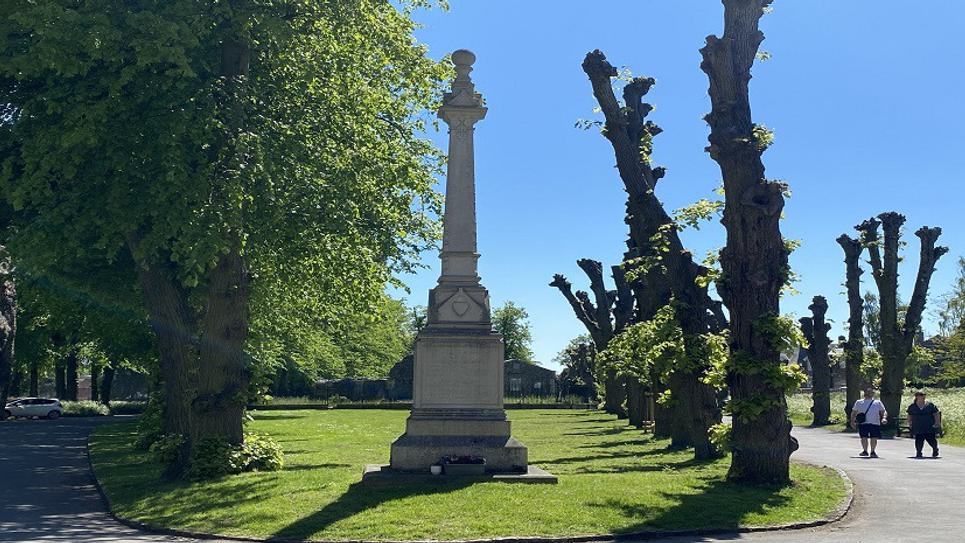
There's a memorial to the 17 Protestant martyrs who were executed in the town on the orders of Queen Mary I. Most of them were burnt at the stake and this was erected in 1903. Each face of the rectangular base has an inscribed panel, the 4th has inscribed: 'Who, for their faithful testimony to God's truth during the reign of Queen Mary suffered death in this town 1555-1558'.
However there appears to have been an error as to the actual number of these men, Foxe’s Book of Martyrs includes fourteen that died in Bury St Edmunds, according to Suffolk Archives. The other three died elsewhere.
Mary I, daughter of Henry VIII and niece to Mary Tudor Queen of France (who is buried at St Mary's Church next to the churchyard), was determined to return the country to the Roman Catholic faith and revived the medieval laws for heretics. More than 300 suffered martyrdom during Mary's reign.
5. Mary Haselton Memorial

On the south wall of Charnel House is a memorial to Mary Haselton. Aged 9, she was killed in 1785 by a flash of lightning while saying her prayers at Vespers. The incident had a huge impact on the people of Bury St Edmunds and led to a permanent memorial to Mary.
Did You Know?
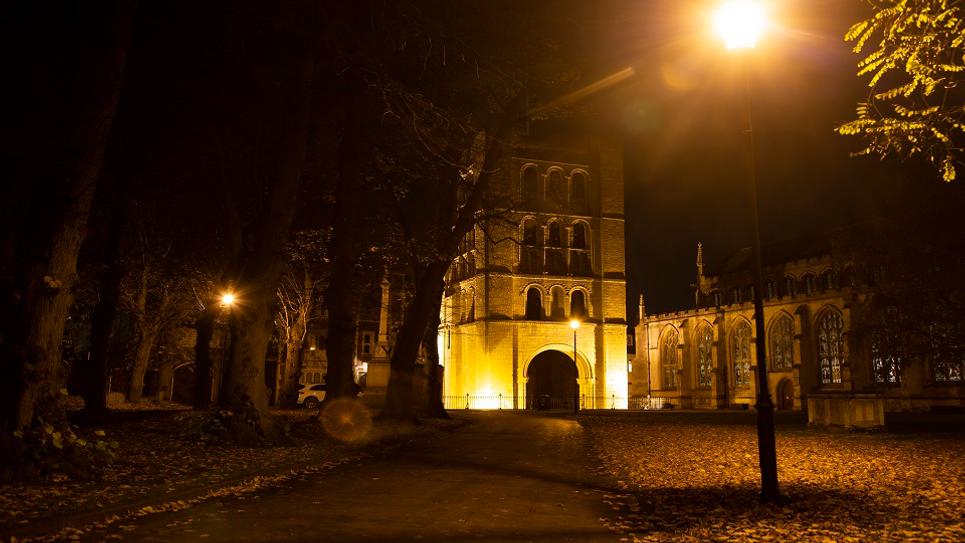
- There are approx 1,200 monuments in The Great Churchyard
- The two oldest tombs in the churchyard are the box tombs to Edward Bourne (1635) and John and Philip Bourne (1638 and 1639).
- The grass area between the Norman Tower and The West Front (where houses are built into the original Abbey West Front) was also part of The Great Churchyard, but in 1958 many of the monuments were removed and some re-positioned.
- The Norman Tower which looks out onto The Great Churchyard is still used today as the bell tower for the Cathedral and houses a peal of ten bells dating from 1785.
- The Norman Tower and the Cathedral were once linked by a coffee house run by Mary Rookes and her daughters Letitia and Mary. There is a memorial to them on the wall of the Cathedral close to the site of the former coffee house.
- There are a number of house built into the remains of the West Front of the Abbey of St Edmun, opposite the Norman Tower. Look carefully and you can see remains of the three main arches flanked by a smaller arched opening on either side.
- The Churchyard was part of the Abbey of St Edmund and you can see part of the original precinct wall in the stretch by St Mary's Church.
- The Great Churchyard is believed to be haunted. Bury St Edmunds' most famous ghostly (undead) resident is The Grey Lady. She is said to appear in St Edmundsbury Cathedral's Great Churchyard annually on 24 February at 11pm. For more ghost stories visit our Haunted Bury St Edmunds Guide.
Related Blogs

News
Bury Tour Guides to launch…
Bury St Edmunds Tour Guides to Introduce new tours in…

News
Town’s Museum Forms New…
Moyse’s Hall Museum will be forging links with a…

News
St Edmundsbury Cathedral…
St Edmundsbury Cathedral in Bury St Edmunds is…
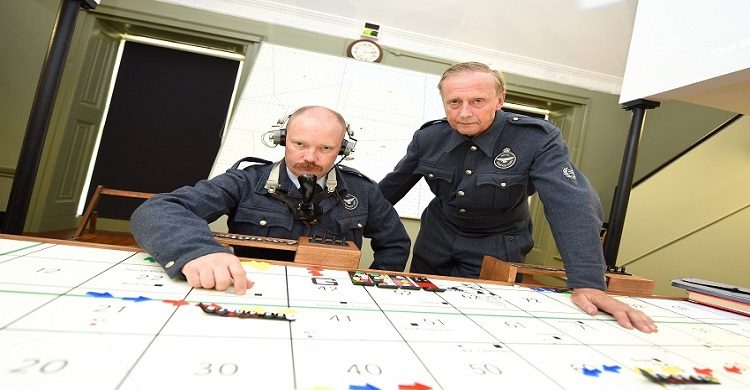
News
Bury St Edmunds & Beyond…
Step inside many of Bury St Edmunds historic buildings…

News
Bury's Best Pubs with a Past
some notable, historic and somewhat quirky pubs and…
Latest news

News
Enjoy a Festive Afternoon Tea in 2025
Celebrate the Christmas season with a festive afternoon tea in Bury St Edmunds & Beyond...

News
Festive Winter Walks
Get outside and enjoy the fresh crisp winter air with one of these walks in Bury St Edmunds and Beyond!

News
Bury Tour Guides to launch new tours next year after successful 2025
Bury St Edmunds Tour Guides to Introduce new tours in 2026 and continue the successful Food and Drink Tours!

News
New in Bury St Edmunds For 2026
A sneak peak into new attractions visitors can enjoy in Bury St Edmunds in 2026.

News
Baby It's Cold Outside... Things To Do When the Weather Turns Frosty
Just because the temperature’s dropped doesn’t mean the fun has to! If you’re visiting town during the chillier months, there’s still plenty to see, do, and experience.

News
Places to sit by a roaring fire in Bury St Edmunds & Beyond
Warm up by a roaring fire this winter in Bury St Edmunds & Beyond...

News
Christmas Park and Walk 2025
Additional parking has been provided by West Suffolk Council in partnership with Greene King this Christmas.

News
Festive Theatre Guide 2025
There’s no better way to summon the magic of the festive season than a trip to the theatre.

News
Festive Markets in Bury St Edmunds
Festive markets are set to bring seasonal cheer to Bury St Edmunds this November and December, offering the perfect chance to pick up all of your Christmas essentials!
